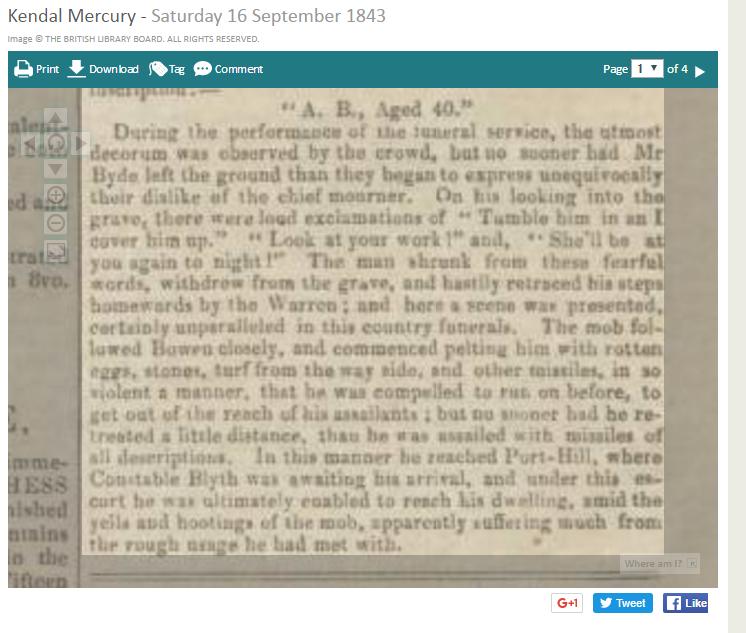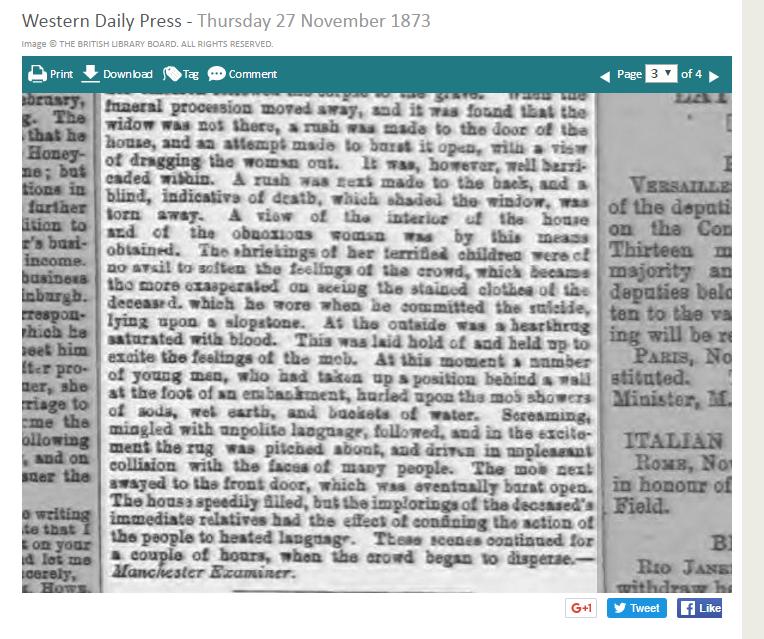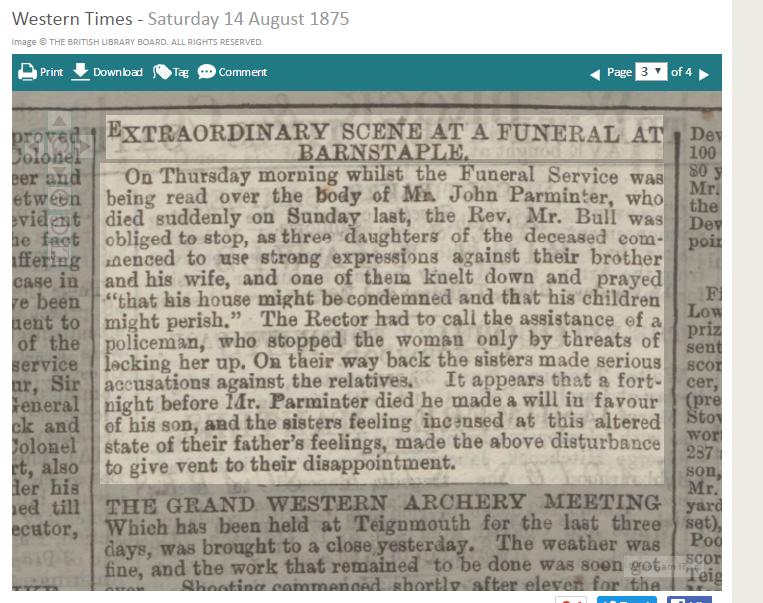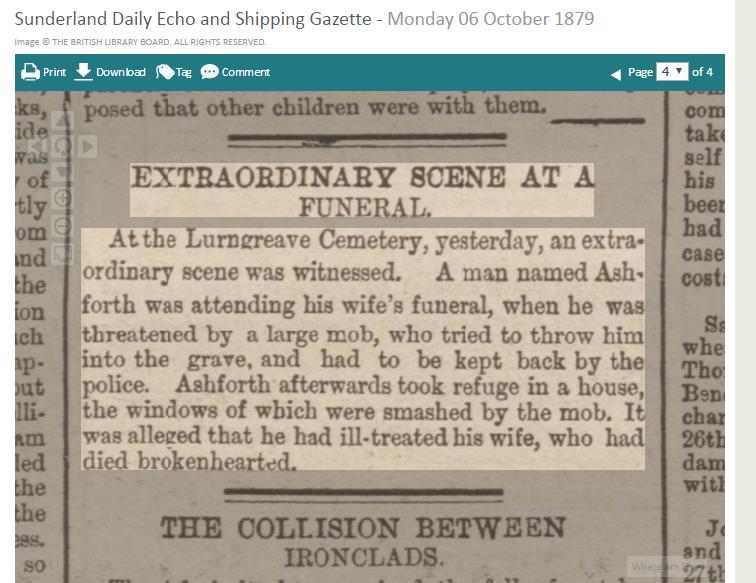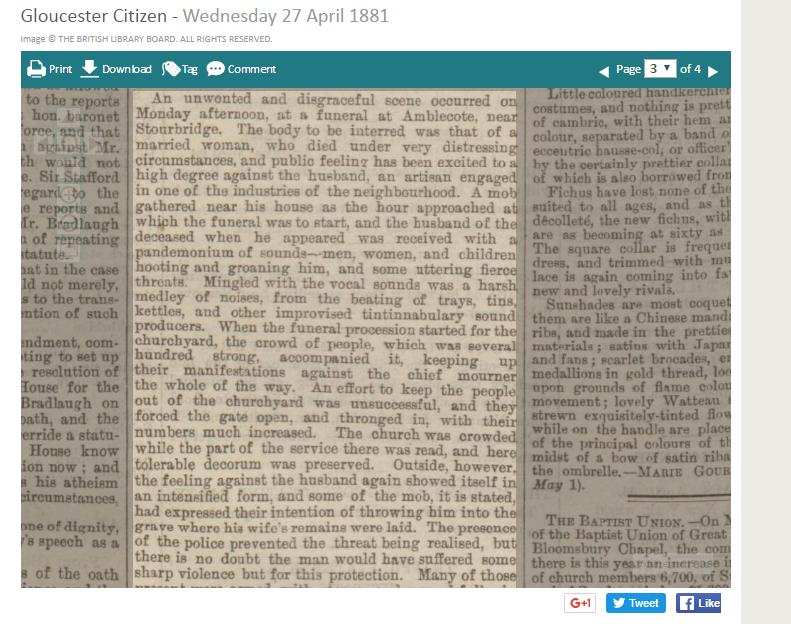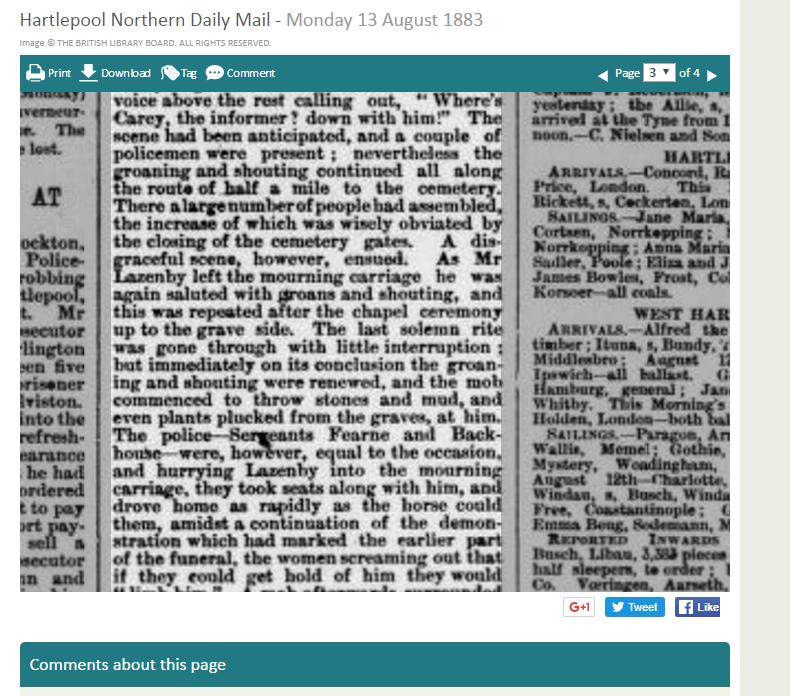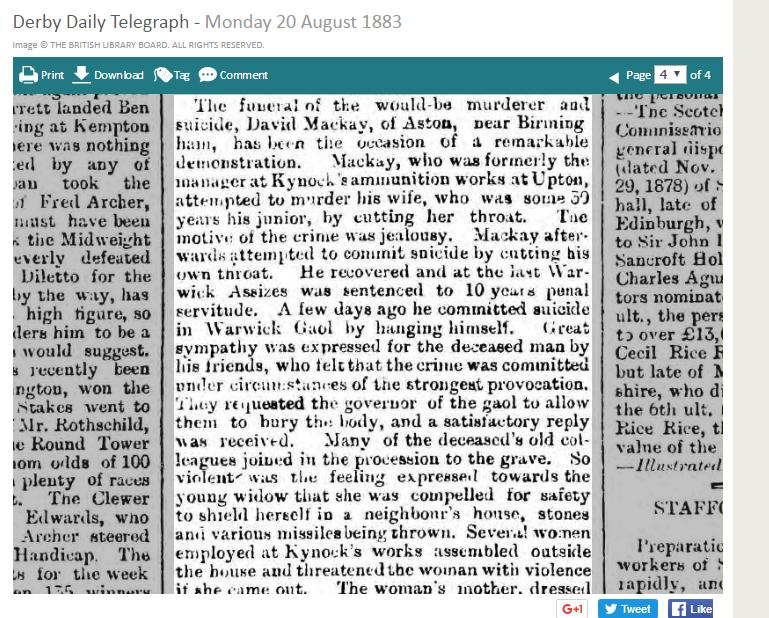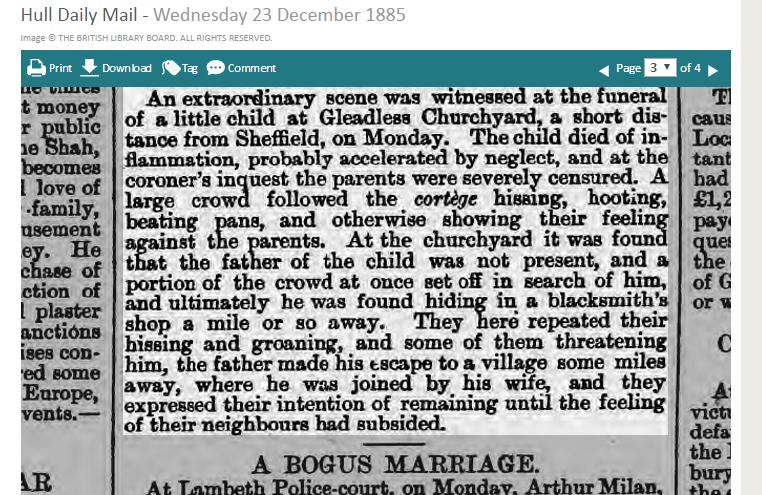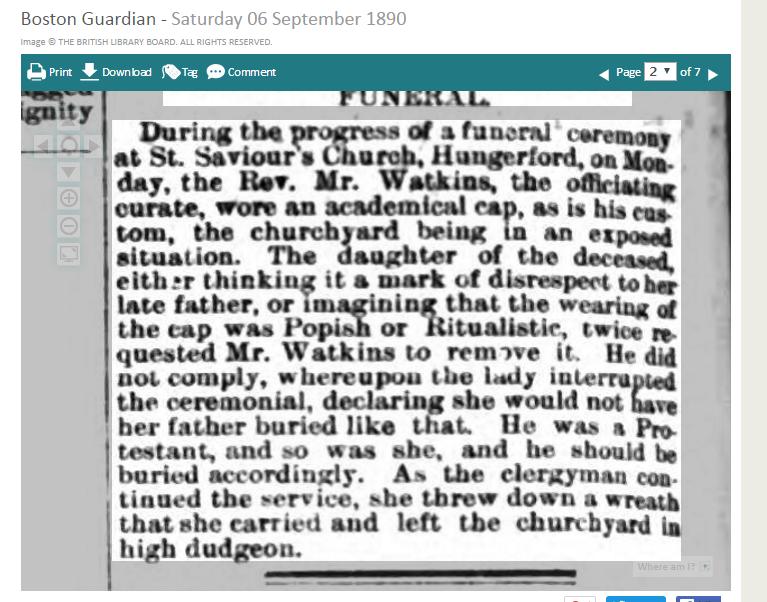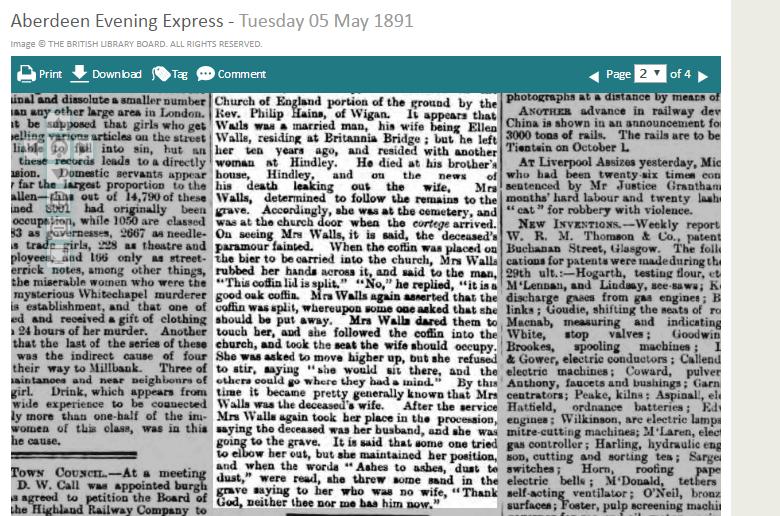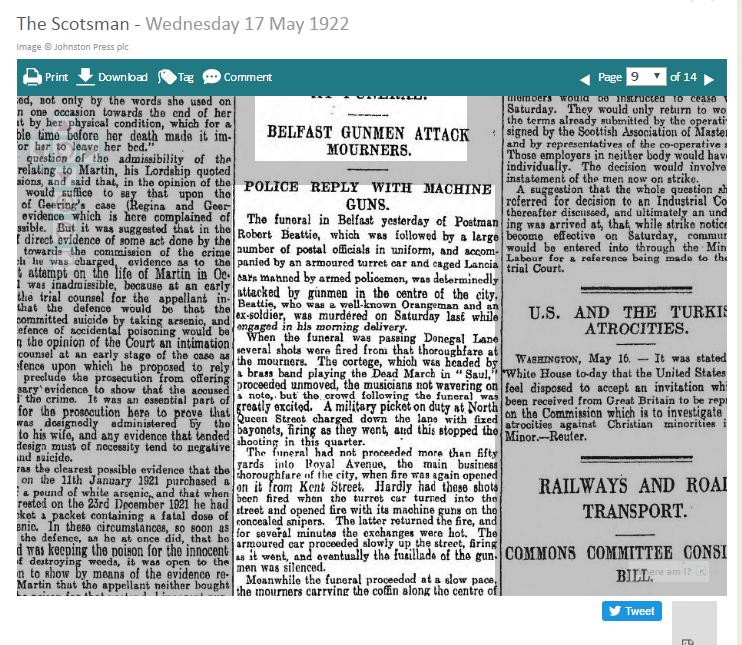Angry Funerals April 15, 2025
Author: Beach Combing | in : Uncategorized , trackbackThe Victorians did so many things better than us, but close to the top of the list are funerals. Here are some ‘angry’ Victorian funerals, most from the second half of the nineteenth century. The most common scenes just involved family arguments. Here is one from 1875 with a dispute over a will:
On Thursday morning whilst the Funeral Service was being read over the body of Mm, John Parminter, who died suddenly on Sunday last, the Rev. Mr. Bull was obliged to stop, as three daughters of the deceased commenced to use strong expressions against their brother and his wife, and one of them knelt down and prayed ‘that his house might be condemned and that his children might perish.’
There are plenty of early modern examples of these kind of imprecations, but to find them in 1875 is remarkable.
Of course, often the vicar was the target of the rage. There is something wonderful about the misplaced stroppiness of the daughter in 1890, after a vicar refused to remove his hat while reading the funeral rights: ‘she threw down wreath that she carried and left the churchyard in a high dudgeon’
There are also lots of accounts of disagreements about who was the real wife: in this account from 1891, Mrs Walls was the wife but had not lived with her husband for ten years: he had left her for another woman. On the basis of this description he may possibly have made the right decision…
Accordingly, [Mrs Walls] was at the cemetery, and was at the church door when the cortege arrived. On seeing Mrs Walls, it is said, the deceased’s paramour [with whom he’d lived for ten years] fainted. When the coffin was placed the bier to be carried into the church, Mrs Walls rubbed her hands across it, and said to the man, ‘This coffin lid is split.’ ‘No,’ replied, ‘it is a good oak coffin.’ Mrs Walls again asserted that the coffin was split, whereupon some one asked that she should be put away. Mrs Walls dared them to touch her, and she followed the coffin into the church, and took the seat the wife should occupy. She was asked to move higher up, but she refused to stir, saying ‘he would sit there, and the others could go where they had a mind.’ At this time it became pretty generally known that Mrs Walls was the deceased’s wife. ‘After the service Mrs Walls again took her place the procession, saying the deceased was her husband, and she was going the grave. It said that some one tried to elbow her out, but she maintained her position, and when the words ‘Ashes to ashes, dust dust,’ were read, she threw some sand in the grave saying to her who was no wife, ‘Thank God, neither thee nor me has him now.’
Wow. Newspaper stories more typically deal with husbands or wives being punished by the local community for their unkindness to each other or to a child. Here is a nice short instance from 1879.
At the Lurngreave Cemetery, yesterday, an extraordinary scene was witnessed. A man named Ashforth was attending his wife’s funeral, when he was threatened by a large mob, who tried to throw him into the grave, and had to be kept back by the police. Ashforth afterwards took refuge in a house, the windows of which were smashed by the mob. It was alleged that he had ill-treated his wife, who had died brokenhearted.
Here is one from 1885 involving the ill treatment of a child. Note the beating pans, a classic part of the nineteenth-century village trial by fury.
The child died of inflammation, probably accelerated by neglect, and at the coroner’s inquest the parents were severely censured. A large crowd followed the cortège hissing, hooting, beating pans, and otherwise showing their feeling against the parents. At the churchyard it was found that the father of the child was not present, and a portion of the crowd at once set off in search of him, and ultimately he was found hiding in a blacksmith’s shop a mile or so away. They here repeated their hissing and groaning, and some of them threatening him, the father made his escape to a village some miles away, where he was joined by his wife, and they expressed their intention of remaining until the feelings of their neighbours had subsided.
Here, in 1881, the brunt of rage was taken by the husband as his wife had died ‘under very distressing circumstances’.
A mob gathered near his house as the hour approached that the funeral was to start, and the husband of the deceased when he appeared was received with a pandemonium of sounds: men, women, and children hooting and groaning him, and some uttering fierce threats. Mingled with the vocal sounds was harsh medley of noises, from the beating of trays, tins, kettles, and other improvised tintinnabulary sound producers. When the funeral procession started for the churchyard, the crowd of people, which was several hundred strong, accompanied it keeping up their manifestations against the chief mourner the whole of the way. An effort to keep the people out of the churchyard was unsuccessful, and they forced the gate open, and thronged in with their numbers much increased.
Here is another husband from 1883:
A most extraordinary scene took place at a funeral at York on Saturday. A few days ago Isabella Lazenby, the wife of John Lazenby, the landlord of the Newcastle Arms, George-street, York, died under circumstances of such a suspicious nature that, though the doctor who was called in before death gave a certificate to the effect that it was caused apoplexy, combined with alcoholic poisoning, the City Coroner, on the representation of the deceased woman’s relatives, thought it necessary to hold an inquest over the body…
The poor woman had been beaten by her husband.
The knowledge amongst the neighbours of the treatment to which the deceased had been subjected culminated on the occasion of her funeral on Saturday. Whilst the hearse and mourning coach were waiting outside the Newcastle Arms for the body and the mourners, a crowd, composed principally of women, assembled, and immediately on the appearance of Mr Lazenby he was greeted with a volley of groans, hooting, and shouting, one voice above the rest calling out, ‘Where’s Carey, the informer? down with him!’
Beach does not understand this reference.
The scene had been anticipated, and a couple of policemen were present; nevertheless the groaning and shouting continued all along the route of half a mile to the cemetery. There a large number of people had assembled, the increase of which was wisely obviated by the closing the cemetery gates. A disgraceful scene, however, ensued. As Mr Lazenby left the mourning carriage he was again saluted with groans and shouting, and this was repeated after the chapel ceremony up to the grave side. The last solemn rite was gone through with little interruption; but immediately on its conclusion the groaning and shouting were renewed, and the mob commenced to throw stones and mud, and even plants plucked from the graves, at him. The police —Sergeants Fearne and Backhouse —were, however, equal to the occasion, and hurrying Lazenby into the mourning carriage, they took seats along with him, and drove home as rapidly the horse could them, amidst a continuation of the demonstration which had marked the earlier part of the funeral, the women screaming out that if they could get hold of him they would ‘limb him.’ A mob afterwards surrounded the house, but this was ultimately cleared away by the police.
Hadn’t come across the verb ‘to limb’ before.
Here is another husband, this time in 1843. Notice once more the way that the service itself is respected, but as soon as it is over all bets are off.
During the performance of the funeral service, the utmost decorum was observed by the crowd, but no sooner had Bowen left the ground than they began to express unequivocally their dislike of the chief mourner. On his looking into the grave, there were loud exclamations of ‘Tumble him in an cover him up.’ ‘Look at your work!’ [like that one] and, ‘She’ll be at you again to night!’ [love this one!] The man shrunk from these fearful words, withdrew from the grave, and hastily retraced his steps homewards by the Warren; and here a scene was presented, certainly unparalleled in this country funerals. The mob followed Bowen closely, and commenced pelting him with rotten eggs, stones, turf from the way side, and other missiles, in so violent a manner, that he was compelled to run on before, to get out of the reach of his assailants; but no sooner had he retreated a little distance, than he was assailed with missiles of all descriptions.
The next one is confusing, a man has attempted murder on his wife (by cutting her throat – ‘the motive of the crime was jealousy’) and then committed suicide while in prison, yet apparently it is all her fault: 1883.
Great sympathy was expressed for the deceased man by his friends, who felt that the crime was committed under circumstances of the strongest provocation, they requested the governor of the gaol allow them to bury the body, and a satisfactory reply was received. Many of the deceased old colleagues joined the procession to the grave. So violent was the feeling expressed towards the young widow that she was compelled for safety to shield herself a neighbour’s house, stones and various missiles being thrown. Several women employed at Kynock’s works [where the dead man had been a manager] assembled outside the house and threatened the woman with violence if she came out. The woman’s mother, dressed in deep black, followed the cortège in a cab, but she was recognised by the mob, violently threatened, and had to be escorted by the police. Great excitement prevailed through the entire district.
Here is another undeserving wife from 1873: the man had cut his throat because of the ‘irregularities of the wife’.
A couple of days before the funeral took place it was freely stated that, should widow appear in the procession, she would be subjected to ill-treatment. At two o’clock Tuesday afternoon a large crowd, composed mostly of women and children, assembled in front of the deceased’s late residence, and became so demonstrative that the widow would not come outside. Neither she nor her children followed the corpse to the grave. When the funeral procession moved away, and it was found that the widow not there, a rush was made to the door of the house, and an attempt made to burst it open, with a view of dragging the woman out. It was, however, well barricaded within. A rush was next made to the back, and a blind, indicative of death, which shaded the window, was torn away.
Presumably: ‘how dare she mourn’?
A view of the interior the house and the obnoxious woman was by this means obtained. The shrieking of her terrified children were of no avail to soften the feelings of the crowd, which became more exasperated on seeing the stained clothes of the deceased, which he wore when he committed the suicide, lying upon a slopstone. At the outside was a hearthrug saturated with blood. This was laid hold of and held up to excite the feelings of the mob. At this moment a number of young men, who had taken position behind a wall at the foot of embankment, hurled upon the mob showers sods, wet earth, and buckets of water. Screaming, mingled with unpolite language, followed, and in the excitement the rug was pitched about, and driven in unpleasant collision with the faces of many people. The mob next swayed to the front door, which eventually burst open. The house speedily filled, but the implorings of the deceased’s immediate relatives had the effect confining the action of the people to heated language. These scenes continued for a couple of hours, when the crowd began to disperse.
And just in case you thought that it could not get worse consider this story from 1922 Belfast: here gunmen opened fire on a Protestant funeral cortège and then the police accompanying the funeral opened fire, six years after the Somme, with machine guns. Christ.

